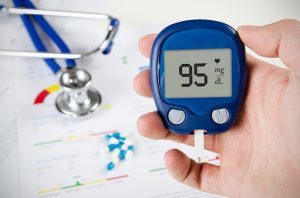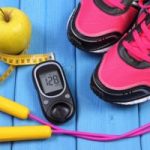 March 28, 2017 is American Diabetes Alert Day! A day where we sound the alarm and get the word out about diabetes distress. Type 2 diabetes is alarmingly prevalent in American adults. We have compiled an assortment of diabetes related articles detailing detection of the disease, how you can prevent it, and how to maintain a diabetic friendly diet.
March 28, 2017 is American Diabetes Alert Day! A day where we sound the alarm and get the word out about diabetes distress. Type 2 diabetes is alarmingly prevalent in American adults. We have compiled an assortment of diabetes related articles detailing detection of the disease, how you can prevent it, and how to maintain a diabetic friendly diet.
Portable device being developed for early diabetes detection
A new portable device is being developed by researchers at the University of Twente in conjunction with commercial parties in order to aid in the early detection of type 1 and type 2 diabetes.
Advertisement
Diabetes has been diagnosed in approximately 420 million people across the globe, while an additional 180 million are living with the condition without realizing it. As such, an early detection device would prove to be extremely beneficial as it could help those who are undiagnosed better manage their condition and improve their quality of life. Continue reading…
 Coping with diabetes distress
Coping with diabetes distress
Diabetes distress is a condition unique to those with type 1 and type 2 diabetes, and though some symptoms may be similar to depression, it is not the same. Approximately 30 percent of people with diabetes experience diabetes distress at some point in their lives as a result of the constant vigilance required to manage their health.
Director of the Behavioral Diabetes Institute William Polonsky commented on the stress associated with a diabetes diagnosis, stating: “The day you develop diabetes, it’s like the universe just handed you a new full-time job that you have to do in addition to whatever else you’re doing. It’s a special job that has a big impact on the rest of your life. There’s no pay and no vacation. Continue reading…
 How to exercise safely with type 1 diabetes
How to exercise safely with type 1 diabetes
Professor Mike Riddell of York University, along with a team of international researchers and clinicians, have published a new set of guidelines to improve the way people with type 1 diabetes exercise and stay safe. While regular exercise can aid in the achievement of blood lipids, body composition, and fitness goals for those with type 1 diabetes, it also comes with the risk of blood sugar fluctuations and hypoglycemia. Those with type 1 diabetes need to monitor their blood sugar levels before, during, and after any exercise to ensure they do not lose glycemic control.
The guidelines were developed by Riddell and 21 of his colleagues by examining observational studies and clinical trials focused on people with type 1 diabetes who exercise regularly over the course of two years. It includes glucose targets for safe exercising as well as dietary and insulin dose adjustments to manage and prevent blood sugar fluctuations due to exercise. Fellow researcher Dr. Remi Rabasa-Lhoret of the Montreal Clinical Research Institute commented on the need for these guidelines, stating: “These guidelines fulfill a major unmet need to help patients with T1D, and their healthcare professionals, to overcome barriers for exercise and this, in turn, should help them achieve the multitude of health benefits that exercise affords.” Continue reading…
 Diabetes diet: Healthy snacks for managing diabetes
Diabetes diet: Healthy snacks for managing diabetes
Consuming healthy snacks can help manage diabetes. The American Diabetes Association (ADA) suggests that avoiding the vending machine is also a wise decision when living with diabetes.
Advertisement
There are numerous snacks that can boost energy while being low in fat, sugar, and salt. Choosing healthy snacks and monitoring portion size is crucial for proper diabetes management as a way of controlling sugar levels and maintaining a healthy weight. Continue reading…
 Diabetes can be prevented and even reversed with a carbohydrate restricted diet
Diabetes can be prevented and even reversed with a carbohydrate restricted diet
Diabetes can be prevented and even reversed with a carbohydrate restricted diet. Spending on diabetes has grown much faster than spending on heart disease, the leading cause of death in the U.S. In 2013, diabetes treatment cost the healthcare system $101 billion.
Although it is well known that diabetes can be managed through dietary intervention, patients are still prescribed medications. The researchers aimed to treat diabetes by significantly cutting the patients’ carbohydrate intake. The researchers found that many of the patients were able to eliminate their medications. Continue reading…
